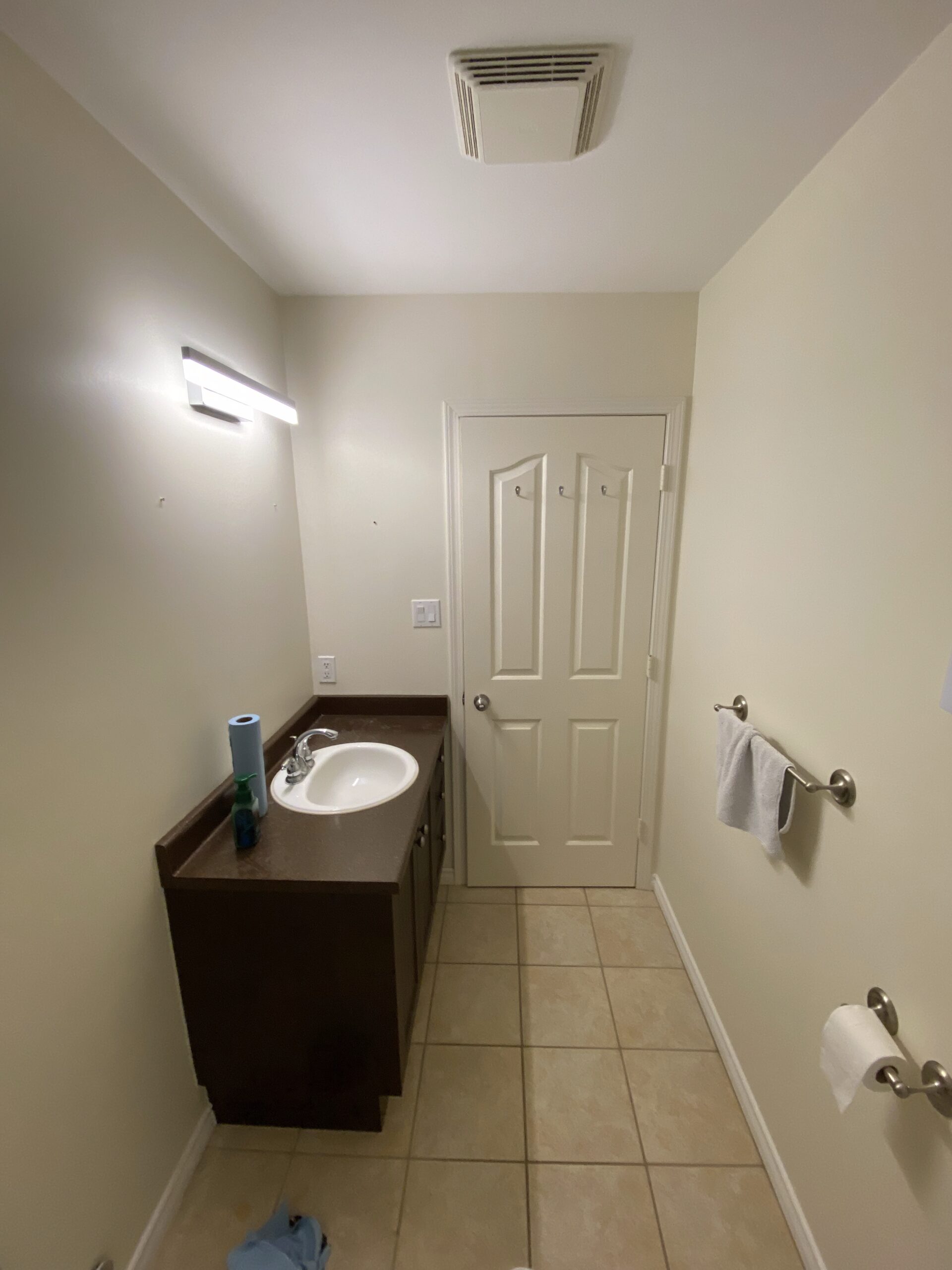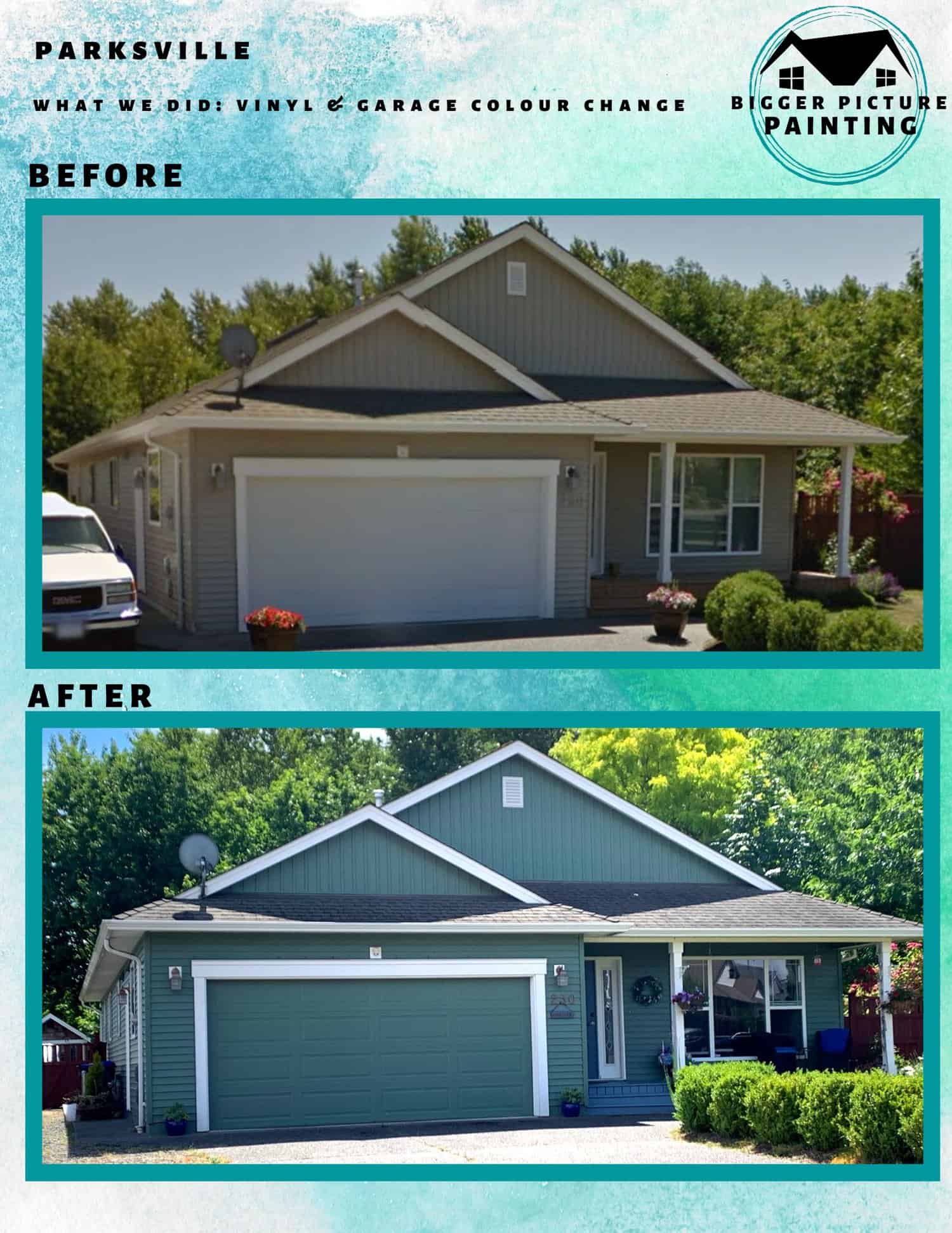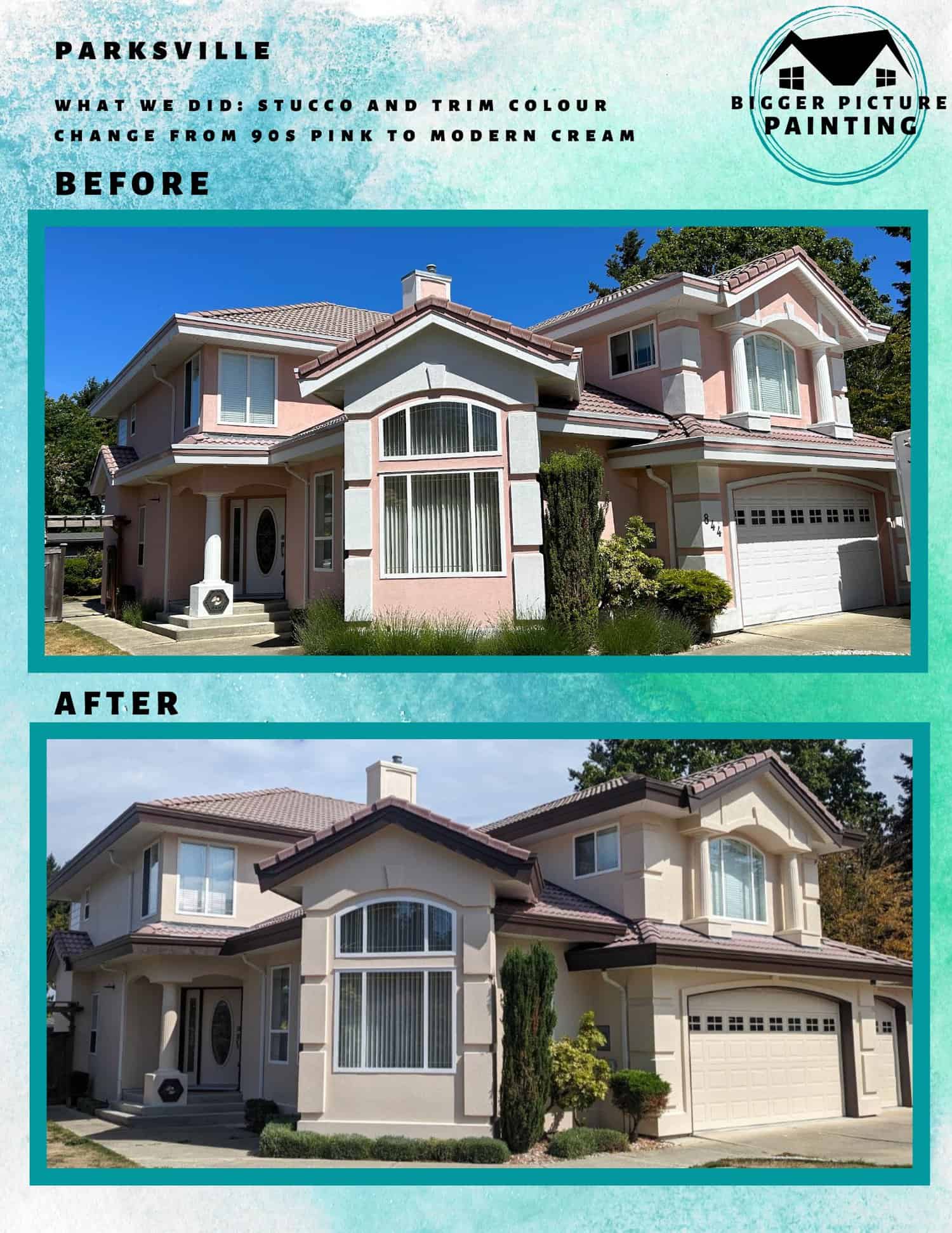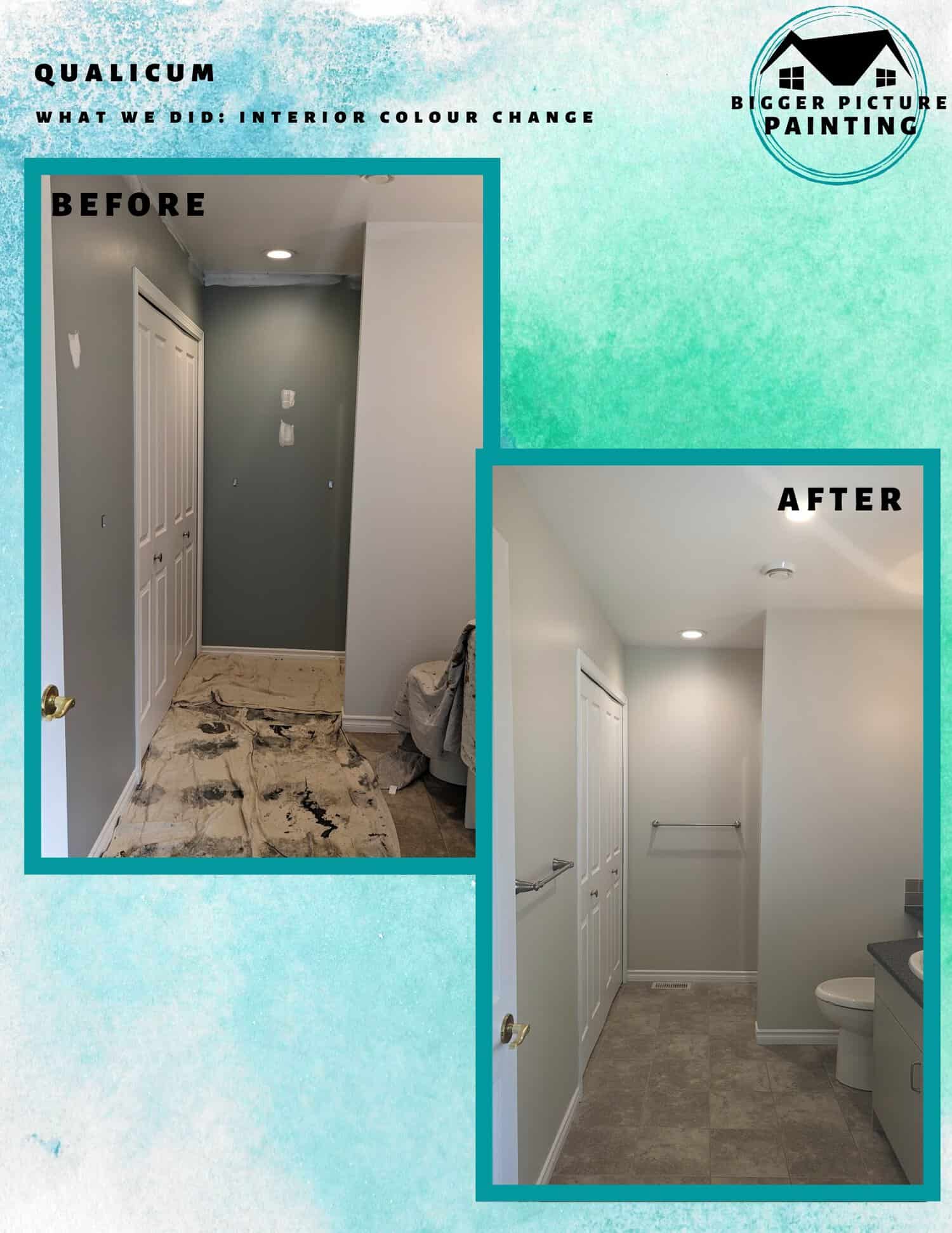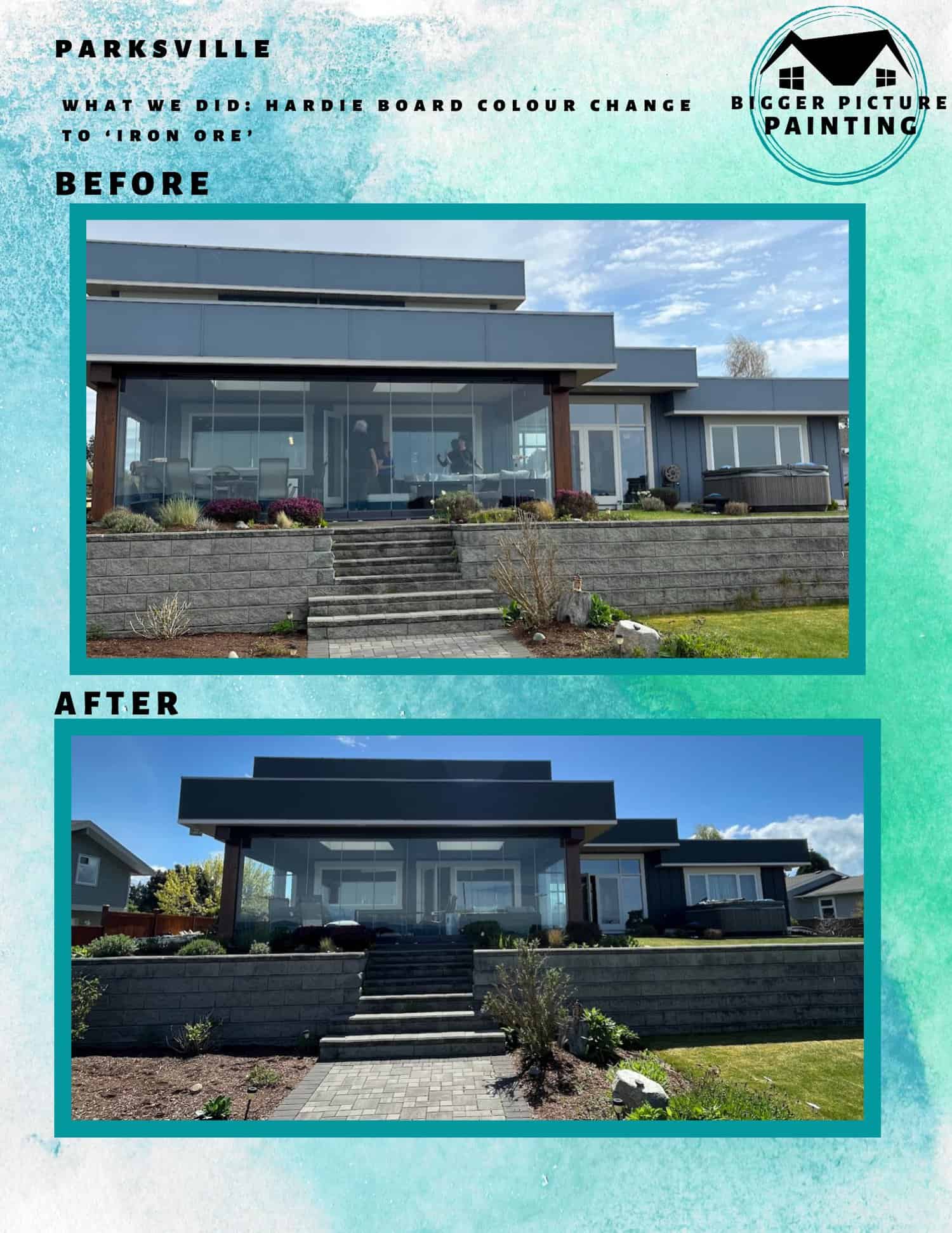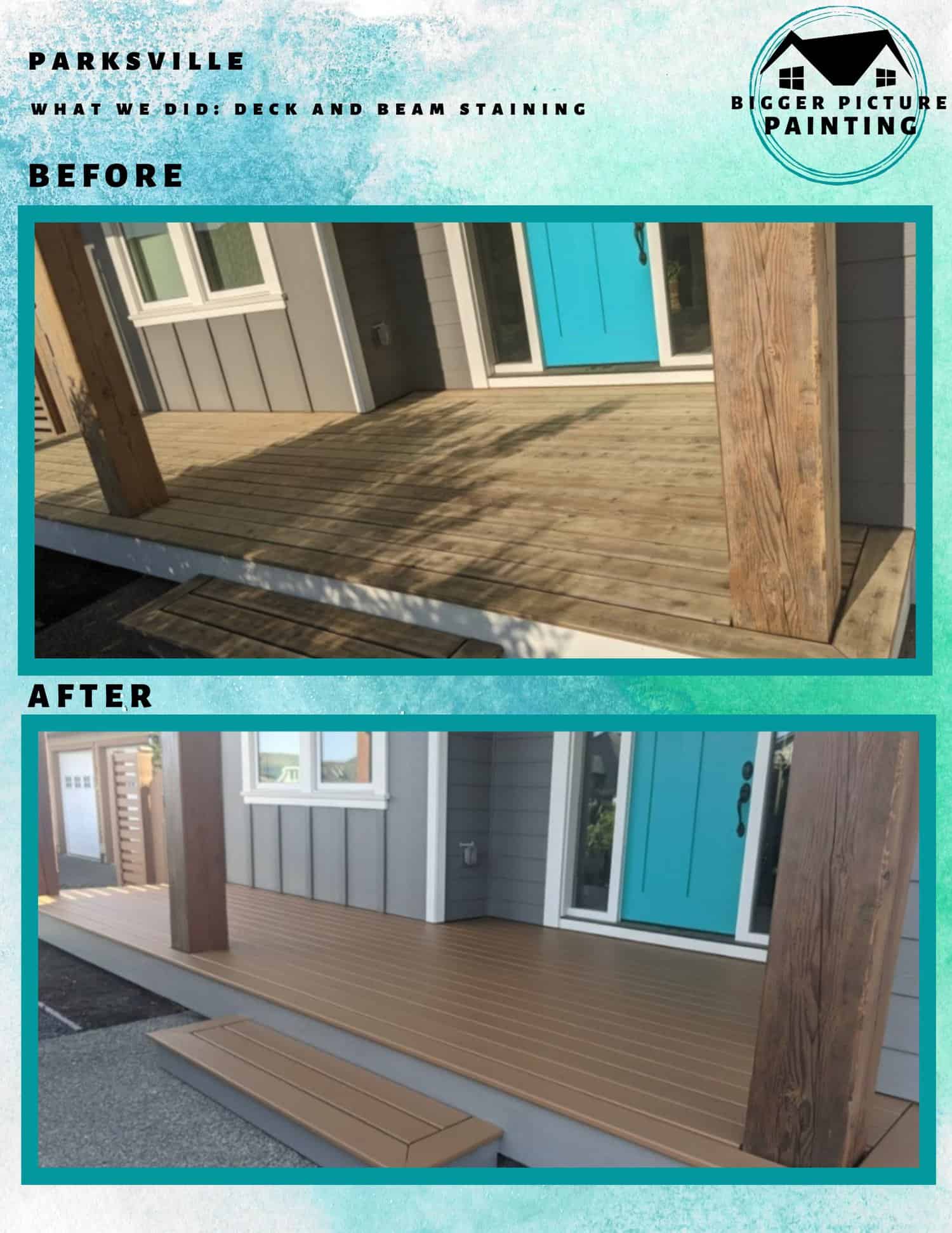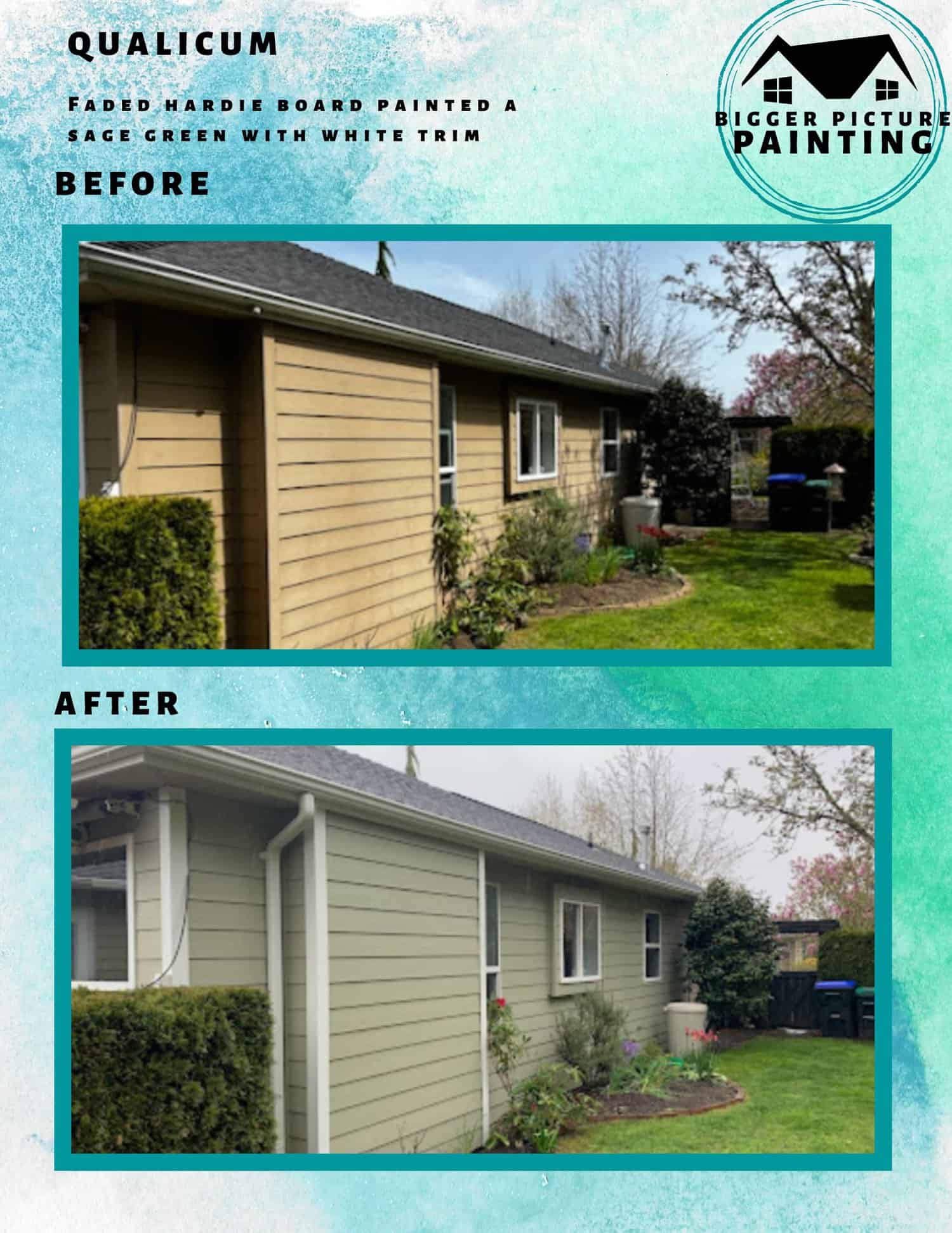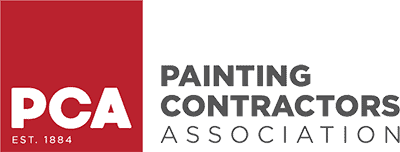Restrooms and utility rooms face constant humidity, cleaning, and abrasion. These environments accelerate paint failure, invite microbial growth, and compromise appearance. Standard architectural coatings are not formulated for these stressors.
This guide provides a detailed, product-specific breakdown of the best moisture-resistant paints for commercial restrooms, janitor closets, and high-humidity utility spaces—aligned with hygiene standards, durability requirements, and maintenance efficiency.
Why Paint Choice Matters in Restrooms & Utility Areas
Humidity and Vapor Exposure
Humidity leads to condensation, especially in unventilated or intermittently climate-controlled areas like staff restrooms, mop closets, and mechanical rooms. Wall assemblies in these areas often operate near or at dew point, leading to paint film failure. Key symptoms include:
-
Bubbling and blistering from trapped moisture under vapor-impermeable paints
-
Efflorescence and salt leaching on concrete and masonry walls
-
Fungal colonization (Aspergillus, Penicillium, Cladosporium) on organic surfaces
Moisture vapor transmission rate (MVTR) is critical. Coatings in high-humidity interiors must allow vapor diffusion while preventing liquid water ingress. Acrylic-modified latex systems with added biocides typically perform best under these conditions.
Chemical and Mechanical Stress
Commercial restrooms and janitorial zones are cleaned with bleach, quats, degreasers, or acidic descalers. These chemicals degrade film integrity over time. Inadequate coatings discolor, soften, or even emulsify under repeated chemical exposure.
Additionally, surfaces are subjected to:
-
Abrasion from mop handles, carts, or brushes
-
Repeated wet-dry cycles from cleaning routines
-
Grease and soap scum buildup
To withstand this, paints must be tested for:
-
ASTM D2486: Scrub resistance
-
ASTM D1308: Chemical resistance (spot testing)
-
ASTM D6904: Resistance to wind-driven rain (if exterior air infiltration is a concern)
Public Perception and Risk Exposure
Visibly peeling or mildewed paint undermines a facility’s cleanliness. In sectors like healthcare or food service, this can directly impact compliance inspections. In offices or hospitality, it affects brand perception.
Paint failure in restrooms may also contribute to:
-
Increased bacterial harborage
-
Reduced indoor air quality
-
Complaints or negative customer reviews
Regulatory and Design Requirements
-
ADA: Paint must meet minimum LRV (light reflectance value) contrast between surfaces for visually impaired users.
-
CDC/FDA/OSHA: Healthcare and food facilities require “cleanable, non-absorbent surfaces” in sanitation zones.
-
Local health codes: Often specify mildew-resistant or semi-gloss finishes in employee restrooms.
Failure to comply can lead to citations, shutdowns, or denial of operating licenses.
Paint Performance Criteria for Humid Environments
Moisture and Mold Resistance
Use interior paints with integrated mildewcide additives and fungistatic coatings. High-performance moisture-resistant paints often use:
-
Zinc pyrithione or IPBC as fungicides
-
Acrylic-urethane binders for hydrophobic surface chemistry
-
Tight polymer networks to limit capillary absorption
Test standard: ASTM D3273 (Resistance to mold in a 28-day chamber test)
Best-in-class paints will retain their film integrity and show ≤10% fungal coverage in lab conditions.
Scrub and Abrasion Durability
Measured by ASTM D2486, Class 1 scrub resistance equates to >1,000 scrub cycles before film failure. This is essential for spaces cleaned daily or with aggressive pads. Look for:
-
Cross-linked acrylics or epoxy-modified latexes
-
Scuff-resistant surface modifiers (e.g., polyurethane beads)
Chemical Resistance
Evaluate paints using spot testing of:
-
Sodium hypochlorite (bleach) – 5.25%–6% concentration
-
Quaternary ammonium compounds
-
Hydrogen peroxide (3–5%)
-
Alkaline degreasers (pH 10+)
Coatings with poor resistance will soften, discolor, or lose gloss after 24-hour exposure.
Antimicrobial Properties
Select coatings with EPA-registered antimicrobial claims where required. These may be:
-
Microbicidal paints (e.g., Sherwin-Williams Paint Shield®) that kill bacteria on contact
-
Antimicrobial paints that inhibit microbial growth but don’t kill pathogens
Applications: Hospitals, assisted living centers, veterinary clinics, daycare restrooms.
Fast Drying and Low Odor
Occupied commercial buildings benefit from fast return-to-service. Preferred coatings should be:
-
<50 g/L VOC (meets LEED and Green Seal standards)
-
Touch dry in <1 hour
-
Recoatable within 2–4 hours
This minimizes downtime in high-use facilities and avoids occupant complaints.
Paint Finish Selection
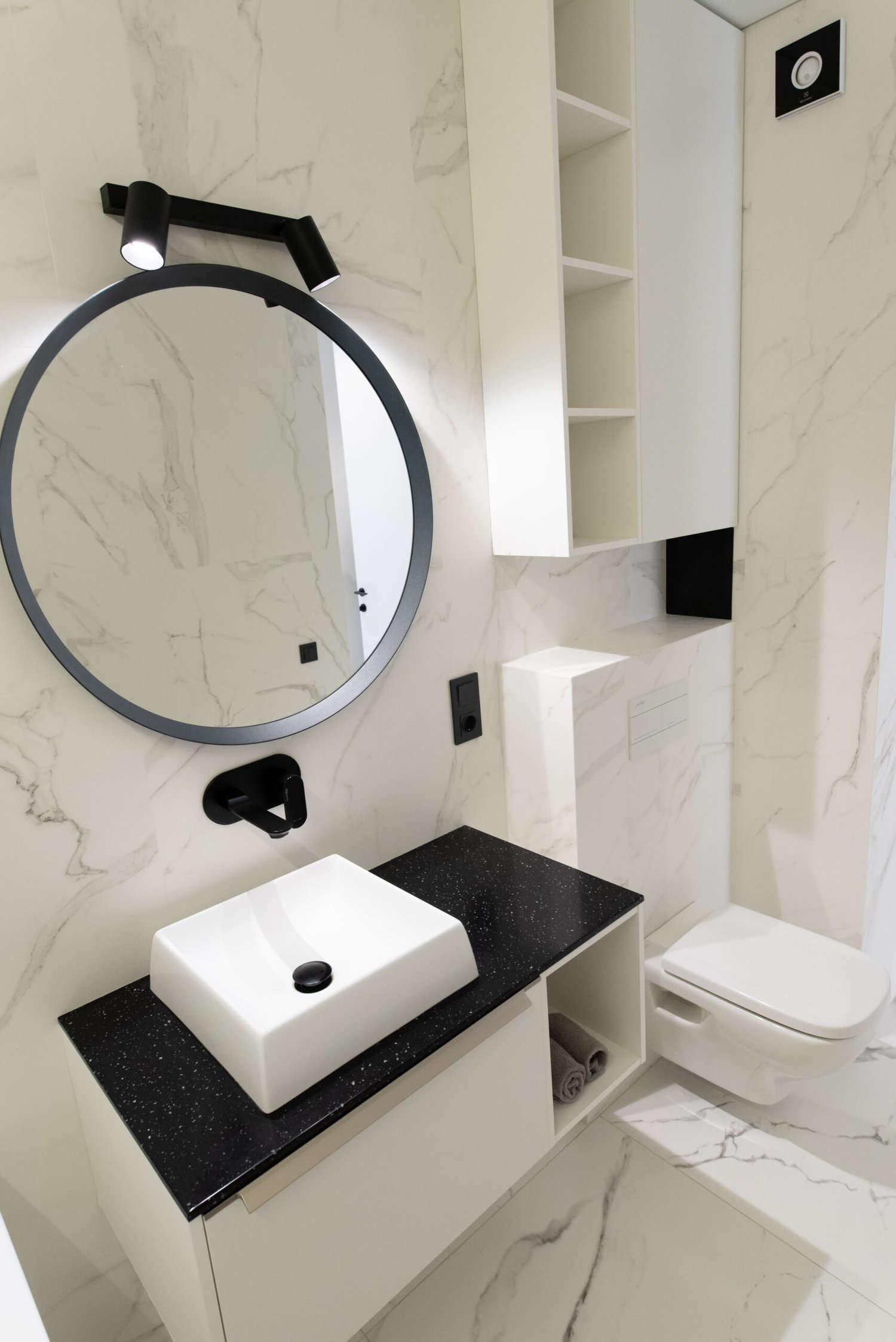
Finish Guide for Humid Environments
| Finish | Characteristics | Suitability |
|---|---|---|
| Satin | Slight sheen, washable, hides surface defects | Walls in restrooms, closets |
| Semi-Gloss | High durability, very washable, enhanced moisture resistance | Wet zones, backsplashes, partitions |
| Gloss | Hardest finish, high reflectivity, best for trim | Baseboards, door frames |
| Flat/Matte | Porous, non-washable | Avoid in any humid zone |
Key Tip: Always confirm compatibility of finish with substrate material—particularly in drywall over CMU, or previously painted walls with alkyd layers.
Product-Specific Recommendations by Brand
Sherwin-Williams
-
Pro Industrial Pre-Catalyzed Epoxy
-
Satin finish
-
Excellent resistance to bleach and alkaline cleaners
-
Meets USDA incidental food contact standards
-
Used in mop rooms, commercial kitchens, and healthcare back rooms
-
-
Paint Shield® Microbicidal
-
Kills 99.9% of MRSA, E. coli, VRE, and S. aureus within 2 hours
-
EPA-registered; no additional disinfection protocols needed
-
Semi-gloss; available in commercial neutrals
-
Benjamin Moore
-
Ultra Spec® SCUFF-X®
-
Proprietary scuff-resistant additives
-
Silver-based antimicrobial technology
-
Meets LEED v4 criteria; ideal for schools and restrooms in high-traffic zones
-
-
Aura® Bath & Spa
-
Matte but moisture-resistant (rare exception to flat rule)
-
Engineered for high-humidity use in residential-style bathrooms
-
VOC <50 g/L
-
Behr
-
Behr Ultra Scuff Defense™
-
Available in satin and semi-gloss
-
Durable finish rated for >2,000 scrub cycles
-
Contains mildew-resistant agents
-
-
Behr Premium Plus® Satin Enamel
-
Budget-friendly, low-VOC (0 g/L after tint)
-
Contains antimicrobial agents
-
Meets GREENGUARD Gold standards
-
PPG
-
Break-Through!® 250
-
Waterborne acrylic with exceptional adhesion
-
Touch dry in 15–20 minutes; ideal for short downtime
-
Use on restroom doors, shelving, pipes
-
-
PPG Speedhide® Zero
-
Zero-VOC interior latex
-
High-hide formula with good touch-up properties
-
Rated for commercial facility interiors under LEED programs
-
Zinsser (Rust-Oleum)
-
Perma-White® Mold & Mildew-Proof
-
Self-priming on existing latex or alkyd finishes
-
Contains EPA-registered mildewcides
-
Satin finish available; 5-year mold-free warranty
-
Paint Systems by Facility Type
| Facility | Priorities | Recommended System |
|---|---|---|
| Restaurant Restrooms | Cleanability, odor control | SCUFF-X or Aura Bath & Spa |
| Industrial Utility Rooms | Chemical resistance, fast-dry | Pro Industrial Epoxy or Zinsser Perma-White |
| Public Schools | Vandal resistance, cleanability | Paint Shield + anti-graffiti topcoat |
| Medical Clinics | Antimicrobial, VOC compliance | Paint Shield or Speedhide Zero |
| Retail Stores | Appearance retention | Behr Ultra Scuff Defense |
Specialty Add-Ons
-
Anti-Graffiti Topcoats
-
Use clear polyurethanes (e.g., Sherwin-Williams Anti-Graffiti Clear)
-
Sacrificial or permanent options available
-
-
Odor-Neutralizing Paints
-
Use absorptive resins and zeolite-type additives
-
Example: Benjamin Moore Natura®
-
-
Mold-Blocking Primers
-
For prep over damaged surfaces
-
Zinsser Mold Killing Primer contains EPA-registered biocides
-
Surface Preparation and Maintenance
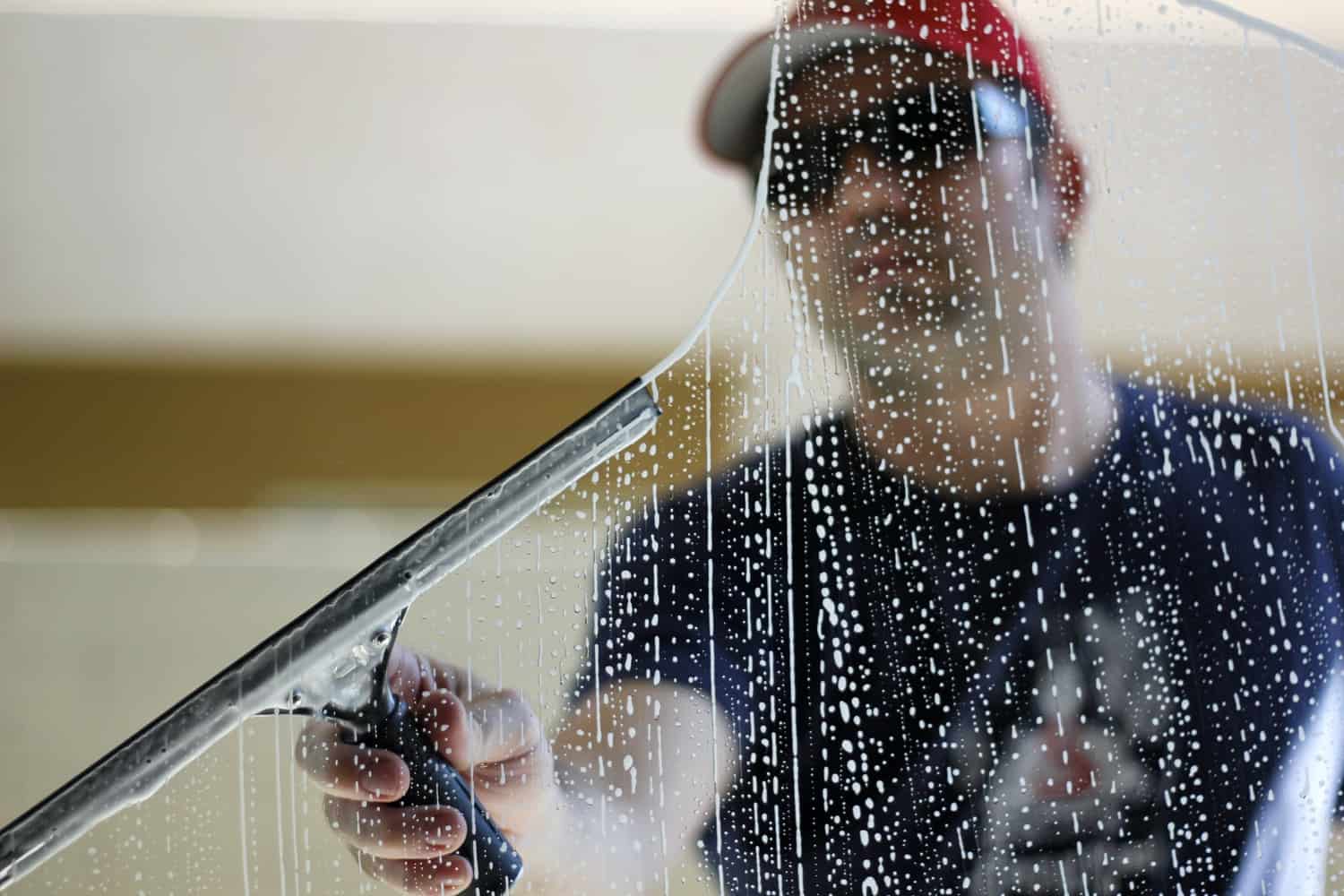
Surface Prep Protocol
-
Degrease surfaces with trisodium phosphate (TSP) or a commercial degreaser
-
Rinse and allow to dry fully
-
Spot prime any stained or porous areas with mold-blocking primer
-
Sand to dull glossy surfaces
For CMU or concrete, apply block filler or high-build primer.
Maintenance Plan
-
Inspect quarterly for adhesion loss or mildew recurrence
-
Touch-up paint with labeled original spec
-
Recoat every 3–5 years or per warranty cycle
Professional Application
-
Why Hire a Pro: Ensures correct surface prep, material choice, and adherence to drying conditions (temperature, humidity, substrate moisture)
-
Scheduling: Night or weekend application avoids customer disruption
-
Value-Added Services: Some contractors include substrate moisture testing, antimicrobial certification, or facility paint mapping
Conclusion
Humidity-related damage in restrooms and utility zones is avoidable with the right coatings. Choosing a paint system that handles moisture, chemical stress, and hygiene standards is essential to performance and reputation.
Need help?
-
Schedule a free restroom paint audit
-
Ask about compliance-focused antimicrobial systems
-
Download our Restroom Coating Selector Cheat Sheet
Protect your facility from the inside out—humidity shouldn’t dictate your maintenance schedule.
